Niels Landwehr
University of Potsdam
Optimizing Curvature Learning for Robust Hyperbolic Deep Learning in Computer Vision
May 22, 2024Abstract:Hyperbolic deep learning has become a growing research direction in computer vision for the unique properties afforded by the alternate embedding space. The negative curvature and exponentially growing distance metric provide a natural framework for capturing hierarchical relationships between datapoints and allowing for finer separability between their embeddings. However, these methods are still computationally expensive and prone to instability, especially when attempting to learn the negative curvature that best suits the task and the data. Current Riemannian optimizers do not account for changes in the manifold which greatly harms performance and forces lower learning rates to minimize projection errors. Our paper focuses on curvature learning by introducing an improved schema for popular learning algorithms and providing a novel normalization approach to constrain embeddings within the variable representative radius of the manifold. Additionally, we introduce a novel formulation for Riemannian AdamW, and alternative hybrid encoder techniques and foundational formulations for current convolutional hyperbolic operations, greatly reducing the computational penalty of the hyperbolic embedding space. Our approach demonstrates consistent performance improvements across both direct classification and hierarchical metric learning tasks while allowing for larger hyperbolic models.
Hyperbolic Geometry in Computer Vision: A Novel Framework for Convolutional Neural Networks
Mar 28, 2023Abstract:Real-world visual data exhibit intrinsic hierarchical structures that can be represented effectively in hyperbolic spaces. Hyperbolic neural networks (HNNs) are a promising approach for learning feature representations in such spaces. However, current methods in computer vision rely on Euclidean backbones and only project features to the hyperbolic space in the task heads, limiting their ability to fully leverage the benefits of hyperbolic geometry. To address this, we present HCNN, the first fully hyperbolic convolutional neural network (CNN) designed for computer vision tasks. Based on the Lorentz model, we generalize fundamental components of CNNs and propose novel formulations of the convolutional layer, batch normalization, and multinomial logistic regression (MLR). Experimentation on standard vision tasks demonstrates the effectiveness of our HCNN framework and the Lorentz model in both hybrid and fully hyperbolic settings. Overall, we aim to pave the way for future research in hyperbolic computer vision by offering a new paradigm for interpreting and analyzing visual data. Our code is publicly available at https://github.com/kschwethelm/HyperbolicCV.
Deep Distributional Sequence Embeddings Based on a Wasserstein Loss
Dec 04, 2019



Abstract:Deep metric learning employs deep neural networks to embed instances into a metric space such that distances between instances of the same class are small and distances between instances from different classes are large. In most existing deep metric learning techniques, the embedding of an instance is given by a feature vector produced by a deep neural network and Euclidean distance or cosine similarity defines distances between these vectors. In this paper, we study deep distributional embeddings of sequences, where the embedding of a sequence is given by the distribution of learned deep features across the sequence. This has the advantage of capturing statistical information about the distribution of patterns within the sequence in the embedding. When embeddings are distributions rather than vectors, measuring distances between embeddings involves comparing their respective distributions. We propose a distance metric based on Wasserstein distances between the distributions and a corresponding loss function for metric learning, which leads to a novel end-to-end trainable embedding model. We empirically observe that distributional embeddings outperform standard vector embeddings and that training with the proposed Wasserstein metric outperforms training with other distance functions.
A Discriminative Model for Identifying Readers and Assessing Text Comprehension from Eye Movements
Sep 21, 2018



Abstract:We study the problem of inferring readers' identities and estimating their level of text comprehension from observations of their eye movements during reading. We develop a generative model of individual gaze patterns (scanpaths) that makes use of lexical features of the fixated words. Using this generative model, we derive a Fisher-score representation of eye-movement sequences. We study whether a Fisher-SVM with this Fisher kernel and several reference methods are able to identify readers and estimate their level of text comprehension based on eye-tracking data. While none of the methods are able to estimate text comprehension accurately, we find that the SVM with Fisher kernel excels at identifying readers.
A Semiparametric Model for Bayesian Reader Identification
Jul 18, 2016



Abstract:We study the problem of identifying individuals based on their characteristic gaze patterns during reading of arbitrary text. The motivation for this problem is an unobtrusive biometric setting in which a user is observed during access to a document, but no specific challenge protocol requiring the user's time and attention is carried out. Existing models of individual differences in gaze control during reading are either based on simple aggregate features of eye movements, or rely on parametric density models to describe, for instance, saccade amplitudes or word fixation durations. We develop flexible semiparametric models of eye movements during reading in which densities are inferred under a Gaussian process prior centered at a parametric distribution family that is expected to approximate the true distribution well. An empirical study on reading data from 251 individuals shows significant improvements over the state of the art.
Varying-coefficient models with isotropic Gaussian process priors
Oct 14, 2015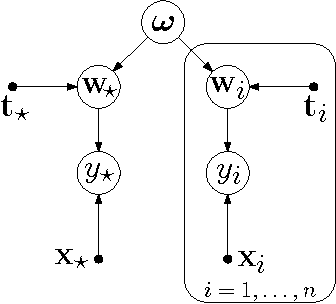
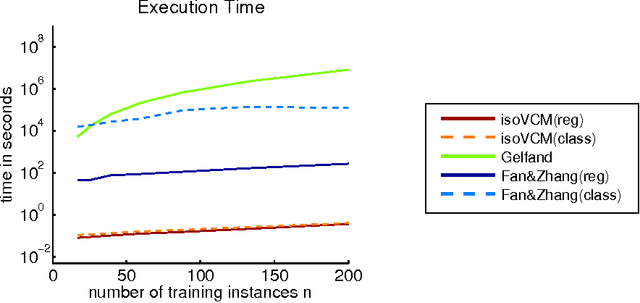
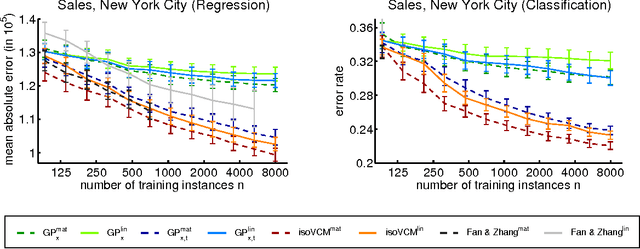
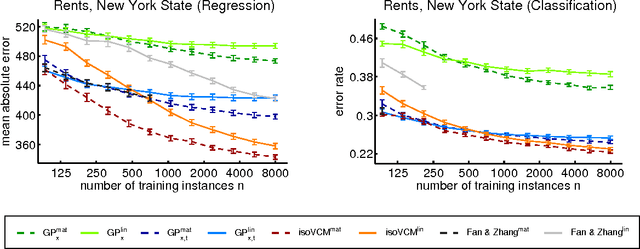
Abstract:We study learning problems in which the conditional distribution of the output given the input varies as a function of additional task variables. In varying-coefficient models with Gaussian process priors, a Gaussian process generates the functional relationship between the task variables and the parameters of this conditional. Varying-coefficient models subsume hierarchical Bayesian multitask models, but also generalizations in which the conditional varies continuously, for instance, in time or space. However, Bayesian inference in varying-coefficient models is generally intractable. We show that inference for varying-coefficient models with isotropic Gaussian process priors resolves to standard inference for a Gaussian process that can be solved efficiently. MAP inference in this model resolves to multitask learning using task and instance kernels, and inference for hierarchical Bayesian multitask models can be carried out efficiently using graph-Laplacian kernels. We report on experiments for geospatial prediction.
Learning to Identify Regular Expressions that Describe Email Campaigns
Jun 18, 2012



Abstract:This paper addresses the problem of inferring a regular expression from a given set of strings that resembles, as closely as possible, the regular expression that a human expert would have written to identify the language. This is motivated by our goal of automating the task of postmasters of an email service who use regular expressions to describe and blacklist email spam campaigns. Training data contains batches of messages and corresponding regular expressions that an expert postmaster feels confident to blacklist. We model this task as a learning problem with structured output spaces and an appropriate loss function, derive a decoder and the resulting optimization problem, and a report on a case study conducted with an email service.
Combining haplotypers
Oct 26, 2007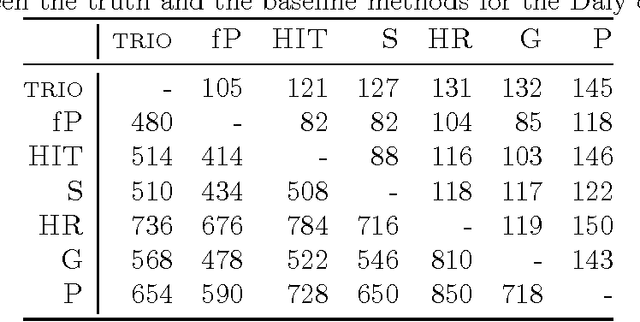
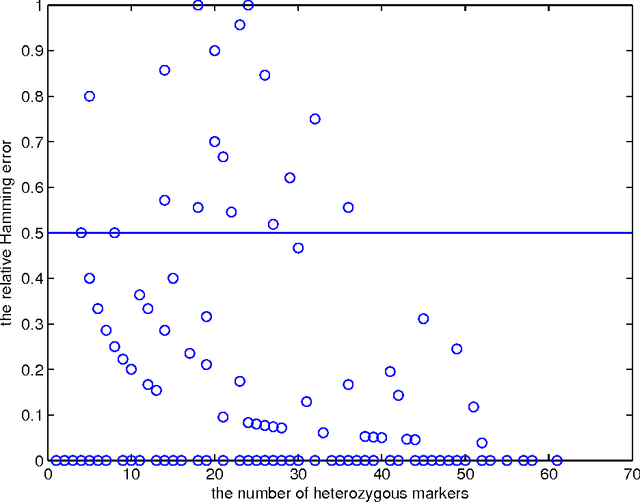
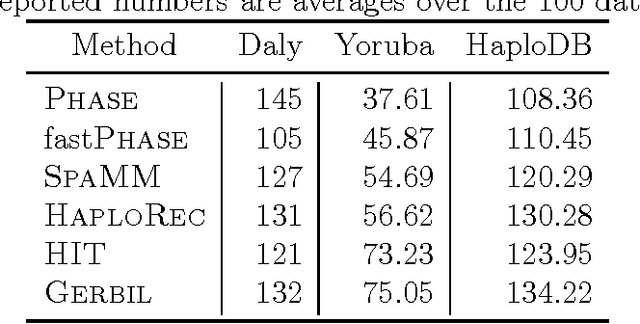
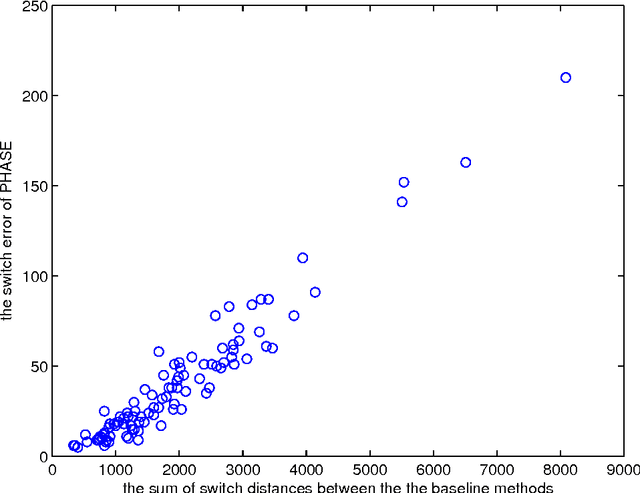
Abstract:Statistically resolving the underlying haplotype pair for a genotype measurement is an important intermediate step in gene mapping studies, and has received much attention recently. Consequently, a variety of methods for this problem have been developed. Different methods employ different statistical models, and thus implicitly encode different assumptions about the nature of the underlying haplotype structure. Depending on the population sample in question, their relative performance can vary greatly, and it is unclear which method to choose for a particular sample. Instead of choosing a single method, we explore combining predictions returned by different methods in a principled way, and thereby circumvent the problem of method selection. We propose several techniques for combining haplotype reconstructions and analyze their computational properties. In an experimental study on real-world haplotype data we show that such techniques can provide more accurate and robust reconstructions, and are useful for outlier detection. Typically, the combined prediction is at least as accurate as or even more accurate than the best individual method, effectively circumventing the method selection problem.
 Add to Chrome
Add to Chrome Add to Firefox
Add to Firefox Add to Edge
Add to Edge